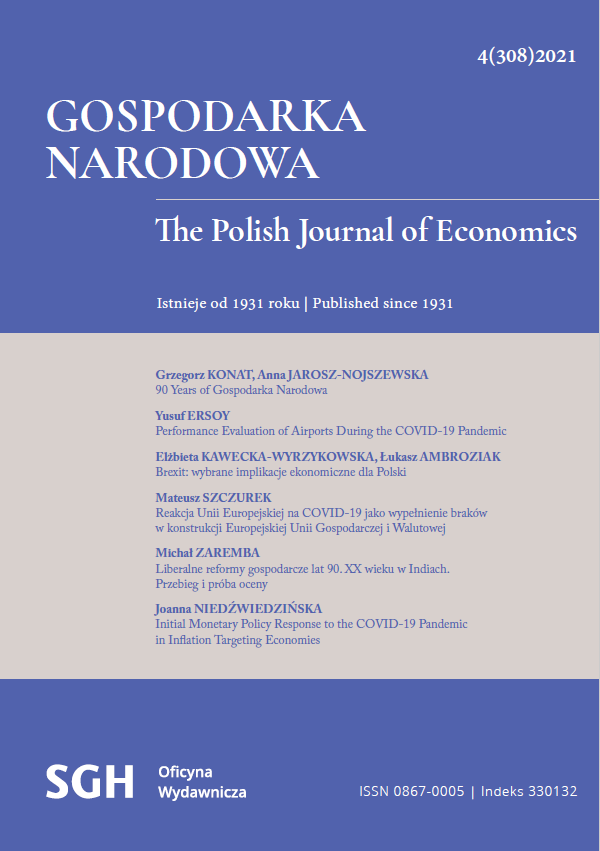Związek zróżnicowania płac z produktywnością w ujęciu terytorialnym
The Relationship Between Wage Differentiation and Productivity in Polish Regions
Author(s): Damian Mowczan, Jan Jacek SztaudyngerSubject(s): Economy
Published by: Szkoła Główna Handlowa w Warszawie
Keywords: Gini coefficient; regional analysis; TFP; wage differentiation; economic level and growth
Summary/Abstract: The article attempts to determine the optimal wage differentiation in Poland’s 16 regions from 1999 to 2015. In our study, optimality is a maximum level of total factor productivity. Wage differentiation was measured by the Gini coefficient. Two hypotheses were tested and confirmed: (1) the relationship between wage differentiation and TFP is described by the parabolic function with a maximum; (2) parabolic functions differ from each other, with different optimal differentiations for each region. In this article, we try to answer the question of how the optimal wage differentiation should be estimated. Is it better to group regions with a hypothetically similar optimal wage differentiation? Or is it better to use a standardised variable approach? We conclude that it is better to use a standardised variable. It seems that this finding has a universal significance. It will make it possible to resolve disputes about whether the relationship between the differentiation of wages (or income) and the level or dynamics of economic efficiency is negative or positive. It will also help explain why many studies do not confirm the link between wage (income) differentiation and economic efficiency. In our opinion, the contradictory, and sometimes inconsistent, results are due to the use of an overly simplified model – one that omits the two confirmed hypotheses.
Journal: Gospodarka Narodowa. The Polish Journal of Economics
- Issue Year: 312/2022
- Issue No: 4
- Page Range: 60-73
- Page Count: 14
- Language: Polish

